Do you find yourself in intense pain due to an infection on your toenail? Do you have difficulty playing sports and walking around normally?
If any of the above mentioned questions rings a bell, gear up for some bad news. It looks like the fungus has already made its way to your toe nail and it’s going to stay there unless you act quickly and appropriately to remedy it!
Additionally, if you are prone to experiencing any of the following symptoms, you have most likely become a victim of toenail fungus:
Let’s pause for a second, because there’s good news too! You’re not alone. You will be amazed to know that millions of people around the world are experiencing the same pain.
Toenail fungus is one of the most common afflictions when it comes to nails. Make no mistake, this is a disease, and it’s not going to leave you alone unless properly treated.
We all have fungus in our bodies; it’s part of being human. However, we need to stop it from causing problems and become too dominant, lest further complications arise.
Although toenail fungus is commonly seen on toenails, it can also affect your toes. This leads to another piece of bad news: toenail fungus is contagious. Yes, it is! And if you are not going to fix it soon, it might spread across all of your fingers.
Don’t say you haven’t been warned.
How it looks like? (Click to Expand)
Should I Be Worried?
You should worry about toenail fungus because:
Causes Of Toenail Fungus
There can be plenty of reasons for toenail fungus and plenty of places from where you can catch it! It is indeed a daunting and almost impossible task to avoid because this fungus is commonly present in:
Furthermore, any significant trauma, such as excessive pressure, injury, or even lack of air can weaken the nail. The weakening of the nail makes it more prone to catching toenail fungus. What’s more, improper nail care and trimming of nails can also result in getting the infection.
Now you must be wondering how it is possible to leave everything you love just because of the fungus which is hiding in every damp and humid place of this earth?
You can’t!
But a combination of precaution and remedy can help avoid any unsavory nail afflictions, without drastically altering your everyday routine.
People At Risk of Catching Toenail Fungus
Although anyone can be affected by toenail fungus at any point in their life (as the causes are diverse), there is a specific group of people who are more susceptible to this disease.
These people include:
These are the most common types of people who are at a higher risk of catching this infection. However, there are some other conditions and traits as well, which can trigger this condition.
In no particular order, here are some preexisting conditions that can induce toenail fungus with relative ease:
Types Of Toenail Fungus
There are a plethora of toenail fungus types out there! Not all of them are the same, and not all of them show the same symptoms. Therefore, you need to have a clear understanding of the type of fungus which is living on your toenail and steadily spreading.
The most common type of fungus is known as T.rubrum. This fungus has a habit of infecting the skin in several ways. In no particular order:
The first kind begins at the end of your nails and eventually spreads inside it and swells up the nail. This type of fungus is called “distal subungual onychomycosis.” This classification is the most common one, and it usually targets both adults and children. Distal subungual onychomycosis stays more on the toenail and less on the toes, unlike other types of fungus.
The second type of toenail fungus within T.rubrum begins its life not from the end, but from the base of your nail. The same process of swelling ensues. This type of fungus is known as “proximal subungual onychomycosis.” This type is not very common as it is only seen in people with an extremely weak immune system.
The next type of fungus is known as “Candida”, and it is associated with cuticle infection. As a result, you see thickened brown, pale, yellowish and blue nails.
Finally, the last type of stubborn fungal infection is famous by the name “White superficial onychomycosis.” The symptoms of this condition are the presence of white or yellowish powdery material which the doctor removes with the help of medical instruments like scalpels and scrapes. This condition is most prevalent in tropical areas where the moist environment aggravates it.
Signs and Symptoms
Before you begin the treatment process, we have to make sure that you’re treating the right ailment. Look for the following signs and symptoms, and if any of these symptoms ring true, you need to seek medical attention for toenail fungus:
If you are experiencing any of the above conditions, then sadly, toenail fungus is residing on your toenail and you need to take action!
10 Home Remedies To Treat Toe Nail Fungus
There are tons of treatments, cures, and home remedies which exist to help you get rid of toenail fungus. Although it won't go away instantly, it WILL eventually! Let's explore some of the widely popular tips, tricks, and treatments available out there.
1
Vicks VapoRub
Every home has a bottle of Vicks VapoRub in it! If you don't have one, then get one right away. Vicks VapoRub is not just a fantastic solution for getting rid of that blocked sinus, cough and congested chest; it can also be used for the treatment of many skin conditions, and this includes toenail fungus.
This topical ointment has a fantastic effect on toenail fungus, and tackles it at the base of the fungus. Moreover, it also provides a cooling sensation which can also help you alleviate some of that stinging sensation and the pain. Thus, it soothes the symptoms while curing the disease.
To use it, apply the ointment on your toenail at least once a day. Repeat the process for at least three weeks or until the condition goes away. If it persists beyond three weeks, either seek medical attention or try one of the many alternatives listed in this guide.
2
Tea Tree Oil
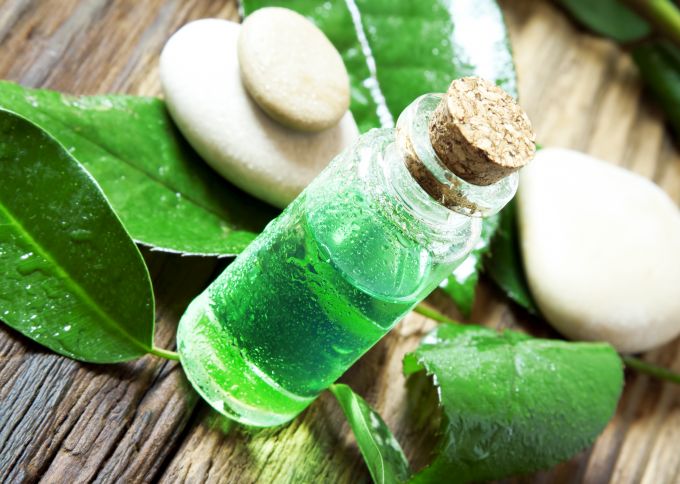
Another fantastic home remedy for the treatment of this skin condition is through the application of tea tree oil. Tea tree oil is an essential oil that has been used for ages to address various skin issues and even attention disorders. No matter what your skin condition is, tea tree oil can probably make it better.
Toenail fungus is no exception. According to research by the National Center for Complementary and Integrative Health, tea tree oil can help in the treatment of toenail fungus.
To use tea tree for the treatment, take the right amount of this essential oil, and apply it on the affected nail. Repeat the process twice a day for a couple of weeks. Do not forget to wash your hands before applying anything on the affected toenail.
Also, please bear in mind that tea tree oil is not suitable for all skin types, and your best bet is conducting a patch test before application to ensure it’s meant for you.
3
Oregano Oil
Another oil for addressing the issue is oregano oil. Oregano is known for its antifungal properties, and is also used in several medications and skin serums. Oregano oil contains thymol, which is an excellent skin-friendly ingredient.
To treat your toenail fungus, apply a few drops of this oil on the affected area. You can also increase the quantity according to the area of infection. It is better to apply it using a cotton swab, though application procedures vary.
There is also another way of treating the condition. You can mix the two essential oils, tea tree oil and oregano oil, and apply the combination on the affected area.
However, do not forget to do a patch test on your elbow before using essential oils as they may cause allergic reactions for people with sensitive skin.
4
Vinegar

Did you know that there are many ingredients in your kitchen cabinet that can remedy several medical ailments? One such component is the one you commonly use in salads and soups. Yes, we are talking about vinegar here.
Vinegar has acidic properties which are used in several home remedies. It can be one of the best solutions for your toenail fungus as well. To do the job, soak your entire foot or only the affected area in a tub with two parts water and one-part vinegar.
Do not forget to keep the water lukewarm. If you want to get rid of the strong smell of vinegar, you can also put a few drops of any essential oil such as geranium oil, rosemary oil or frankincense oil in the tub.
Use this remedy once a day for 20 minutes, and repeat as necessary.
5
Mouthwash
Does your bathroom cabinet remind you of something fresh and minty? The calming ingredients present in mouthwashes like Listerine contain thymol, menthol, as well as eucalyptus. All of these ingredients are full of anti-fungal and antibacterial properties. Due to these reasons, Listerine is widely used all over the world for the treatment of toenail fungus.
To treat your foot, soak the affected area directly in Listerine and leave it there for half an hour. Do not rinse off the area with water after you are done with it.
6
Garlic

Many of us don't like garlic in our daily meals, but little do we know that nature has put something good in everything for us. Same is the case with garlic; you might not like it, but you will be thrilled once you will get to know about its antifungal properties.
Garlic is full of antimicrobial properties, and it can address many skin conditions.
To treat your foot, take 2-3 cloves of garlic and chop them using a chopper or crushing machine. Now apply this paste directly on the affected area and leave it on for half an hour. After 30 minutes, remove the paste and do not wash the area with water.
If you don’t like the smell of garlic or if you don't use it at home, you can also buy garlic capsules from pharmacies. By consuming these garlic capsules, you can address this problem from the inside out.
7
Diet is Everything
You cannot deny the role of diet in maintaining your health. If you want to see some productive results from all the medications and home remedies listed here, you need to watch your diet as well.
Here is a list of a healthy food items you can incorporate into your life to help fight off the attacks of toenail fungus:
8
Aloe Vera Gel

Your garden can be your best friend; in this case it is home to one of the best skin-friendly plants out there. We are talking about Aloe Vera.
Aloe Vera has been used for centuries to treat skin ailments and burns. It is also used in the homeopathic treatment of various other diseases, including stomach ulcers. This nature's healing gel is also a unique element for treating your toenail fungus.
It’s simple, all you have to do is take a leaf of Aloe Vera, cut through the middle so that it’s in two halves, and scoop out the gel with the help of a clean spoon.
Now mix this gel with a few drops of essential oils and one carrier oil such an apricot kernel oil. You can store this mixture in a bottle and keep for a couple of weeks. Apply this paste on your toenail twice a day, or until you start seeing visible results.
9
Baking Soda
If you often spend your time in the kitchen, you must be aware of how baking soda works. Baking soda removes excess moisture from anything that it comes in contact with. Since toenail fungus is aggravated by humidity and moisture, baking soda is extremely helpful in treating it.
To use baking soda for treating skin infections and fungus, you can put some in your sock and wear it as you do usually. If you find its presence irritating or intrusive, you can also make a paste by mixing baking soda and water and apply this paste on the affected area. You should leave this paste on your toenail for roughly 10 minutes.
While baking soda is a potential cure for toenail fungus, if you see that your condition is spreading to other toes, you need to seek specialized medical attention and visit a physician.
10
Apple Cider Vinegar

Apple cider vinegar is one of the most popular home remedies for treating this infection. ACV is famous for its antifungal properties, which has been used by homeopathic therapist for many years.
To use ACV for the treatment of toenail fungus, make a mixture of apple cider vinegar and warm water in a tub. Soak your feet in the tub for 15-20 minutes, twice daily. Keep on repeating this treatment until you see positive results.
However, make sure that you use organic and pure apple cider vinegar. Moreover, the vinegar you use should be unpasteurized for the best results.
Top 3 Toenail Fungal Treatment Creams
There are many topical ointments which are excellent for treating fungus if it has become contagious.
First of all, let’s go through the three best toenail fungus treatment creams, thoroughly reviewed by our experts and highly recommended.
1
Funginix
The first and one of the best cream for treating this condition is known as “Funginix.” It is the best antifungal cream available on the market, and is powerful enough to go deep down into your skin and address the root cause of infection and fungus. This topical cream immediately relieves symptom such as stinging and burning.
The best part about this topical cream is that it offers a 100% guarantee, and if any point you find that it isn’t worth your money, you can claim it back.
Moreover, the cream is easy to use, and it comes with a brush. You can apply it using the brush on the affected area quickly and smoothly.
Something of note – this cream doesn’t only address the signs of toenail fungus, it also helps in preventing future build-up of fungus around your toenail and toes. Funginix comes in three different sizes, priced accordingly, so you can choose the one which suits your budget and needs the best.
2
Liquid Nail Pen
You can also try the newly launched nail pen which is also used to treat toenail fungus. No matter what type of fungus you have, this pen will address it through its highly robust and effective formula.
The formula has been tested and proven to render amazing results. It not only treats your toenail but also your toes. You will start seeing the improvement within a couple of weeks.
This treatment is safe and doesn’t contain any harsh chemicals. This gentle formula is one of the reasons why this anti-fungal nail pen is so famous; it repairs any damage caused by the fungus to your nails. It also restores color and makes your nails strong and healthy.
All you need to do is apply this oil-free liquid on the affected areas and wait for the results.
3
Organic Toenail Fungus Treatment
This natural treatment is also an excellent option for those who are looking for the safest and gentlest solution for combating this stubborn skin disease. This medication contains tea tree oil, oregano, and three other essential oils to treat the issue at the root.
Organic toe nail fungus treatment helps you get rid of that pesky and stubborn fungus as well as warts. Therefore, if you want healthy and strong nails, then this medication can be a fantastic solution for you.
You can apply a few drops on the affected area and massage it lightly in a circular motion.
4
Laser
Once you’ve confirmed for a fact that you have onychomycosis (source), laser may be the perfect solution for you, depending on your budget.
Laser is already used as a corrective measure for diseases, infections, and genetic traits like cataracts, dental work, and hair removal.
Lasers are usually very precise, and you can be certain no healthy tissue around your toenail fungus is harmed in the process. Additionally, there are no known side effects of this treatment, so rest easy.
The FDA has approved several types of laser treatments for nail infections and fungus. Bear in mind that you’re advised to pursue topical and oral treatment options prior to opting for laser removal.
However, the prevalence of laser treatment options in even the most basic skin clinics has prompted a new wave of convenience. People don’t want to wait, and would much rather opt for treatment that could potentially alleviate their symptoms in no time.
While the recurrence of the infection cannot be ruled out when laser treatment is utilized, this is the same case when using alternate medication such as oral prescriptions or topical ointments.
Some commonly used (and FDA approved) devices for laser fungus removal include but are not limited to PinPointe™ Footlaser, GenesisPlus, and Noveon®. If you’re considering a laser removal option not listed here, please consult with your physician to know more.
Laser removal of toenail fungus, though convenient, comes at a hefty cost. With almost $1,000 being charged for one session, on average, laser might not be for everyone.
The cost for treatment is high specifically because though laser options have made their way to skin clinics, the technology is proprietary, and solutions are limited. It will be a while before laser removal could replace traditional remedies for toenail fungus.
Though the effects of laser treatment are often immediate, they’re mostly short lived. Sometimes, however, multiple laser treatment sessions are required to ensure complete removal. And that’s how it gets costlier than you may have initially imagined.
The treatment usually takes 15-20 minutes per session, and the number of sessions required varies, depending on the severity of your condition.
Other Medical treatments
Timely medical treatment is vital to avoid the worsening of this skin condition as it is highly contagious and can spread within weeks to other fingers. The truth about this skin disease is that it is time consuming to treat, and the treatment can be highly expensive.
There are many oral medications, alternative therapies, and topical creams available. There are two main options when we consider medical treatment:
Option#1: Taking the medicine orally.
Option#2: Topical ointments to apply on the affected area. It comes in the form of polishes and creams.
Which option is better?
Among the two medical treatment options, the first one is quite aggressive. Although it promises quicker results since it is an oral treatment, it also comes with side effects. You may even damage your liver or pose yourself to other risks by taking oral medication.
The oral medication lasts for 2-3 months, during which you continuously take medications. Moreover, you also need to validate progress with regular blood tests during this period, as the medicine can cause many problems. That is why not many people are fond of oral treatment unless the conditions are severely aggravated.
The other treatment is the topical treatment which takes a whole year to show some results depending upon the condition of the patient. However, it is the safest solution and doesn't pose any risks.
At times, your doctor may also prescribe you a combination of oral and topical treatment. However, it is better to leave that decision to your doctor in any case. In extreme situations, your doctor may even remove your toenail through surgery.
Just for your information, the most popular options for oral medications available for toenail fungus are:
Precautions To Avoid Toenail Fungus
So, you have that toenail fungus, and you are in the process of treating it. This is the time where you need to be cautious so that it doesn’t spread to other toes or recur.
Even if you haven’t experienced toenail fungus yet, you need to consider these precautions as a preemptive tool to eliminate any chances of fungus build-up.
1
Switch To Flip Flops
If your toenail is already affected by fungus, you need to leave your shoes and become friends with flip flops.
Flip flops are ideal for keeping the affected area safe from further damage by decreasing exposure to elements like moisture and warmth.
Flip flops are also an ideal solution for keeping your feet airy and fresh, eliminating any additional signs of fungus build-up.
2
Change Your Socks Everyday
Socks can be the main culprits which can form and grow toenail fungus. Dirty, humid and moist socks can become a home to all fungus and bacteria causing diseases.
It is recommended that you to change your socks every day and always wear them after washing them with antibacterial washing detergents. Moreover, do not let your socks get wet and sweaty.3
Try AntiFungal Powder
There is also an option of antifungal powder, which is commonly available at pharmacies. The primary work process of this powder is just like that of baking soda. You keep the powder in your shoes whenever you wear them.
Moreover, if it is freezing and you need to wear socks 24/7, then you should keep this powder in your socks to save it from the fungus.
4
Use Nail Clipper And Filer
If you want to avoid toenail fungus, then you need to keep your nail clipper in handy. Other instruments which come in direct contact with your nails and skin should be clean and utilized frequently.
Since it is contagious, using any instrument which has already become contaminated with the disease will affect you as well. If you are already experiencing toenail fungus, then make sure that you are sanitizing your filer and nail clipper before every use.
To sanitize your instruments, soak them in water containing an antiseptic solution and then use rubbing alcohol to wipe it clean. Lastly, consider changing your nail clipper after every three months of use.
5
Never Keep Long Nails
Keeping long nails is a risky habit. By doing so, you are only exposing it to harmful situations. Even a little bit of pressure and damage can affect your whole nail, which in turn can trigger the condition of toe nail fungus.
Therefore, always keep your nails short if the opportunity allows.
6
Keep Your Feet Clean
Many people don’t form the habit of keeping their feet clean. Some hardly wash them in winters and keep wearing socks for weeks. This is a hazardous habit which is doing nothing more than making your feet a perfect habitat for fungus and bacteria.
So do not forget to wash your feet every night before sleeping, dry them, and wear clean and dry socks.
7
Still Moisturize
Keeping your feet dry doesn’t have to include forgoing moisturizers. Moisturizers are essential to prevent your feet from cracking. Cracking in the feet and broken skin is the ultimate entry point of fungus and bacteria.
8
Follow The Treatment Religiously
Lastly, make sure that you are following any treatment procedure that you choose to practice, religiously. Home remedy or medical treatment, you need to stick to it as long as your condition persists.
It is highly essential to follow these precautions, along with the treatment, to get the best results! In case of any medical emergency, contact your physician immediately.
Frequently Asked Questions
How long does it take to get rid of toenail infection?
These infections can take a long time for showing the final results. Medical treatment can take up to a year, and in some cases, even 18 months to restore an infected nail to its normal condition.
The bad news is that the infected nail may not look completely normal even after the infection goes away.
Is It contagious?
Yes, this infection is contagious. Just like molds and yeast, this fungus also has a property of spreading and affecting other nails.
However, this infection can’t move from one person to another. The only way you can catch this fungus is if you use a nail clipper and other instruments which are already contaminated, or if you use socks which already carry the germs.
In any case, it is essential to adopt the necessary precautions to keep yourself safe.
What is the best solution for a toenail fungus?
There are many treatment options available as discussed above. However, your physician will decide the ideal treatment for you after examining your condition.
Does Vinegar kill toe nail fungus? How long does it take?
Yes, vinegar has antifungal properties, which is excellent for treating toenail fungus.
However, like any other infection treatment, this treatment is also long term and can take up to 12 months to show results.
Does Apple Cider Vinegar cures toenail fungus?
Yes, just like white vinegar, Apple cider vinegar is also an excellent solution for treating toenail fungus.
This vinegar has a property of forming a protective coating on the nail and kills the fungus.
Is there any laser treatment for toenail fungus?
Yes, apart from many other medical treatments, there is also a laser treatment which is available for treating this infection. There are many FDA approved laser treatments.
There are also different types of laser devices to counter the issue. The laser treatment can be expensive, but it is the best of all medical treatments.
Conclusion
There you have it. Here we had some useful pieces of advice for all those who are suffering from toenail fungus.
When it comes to treating a mild to moderate nail infection, it is best to stick to home remedies as they can be the best options instead of prescription medications. However, if you feel that you are in a lot of pain and the conditions are not getting any better, you are strongly advised to consult a doctor.
The best part about home remedies is that they don't have any side effects at all, unlike other medications. Although science may seem incompatible with home remedies, it is true that nature has at least some answers.
You should also be aware of the fact that there are many factors which are crucial for the treatment of toenail fungus, especially at home. These factors include the authenticity of the ingredient you are using, penetrability, the condition of your toe, and the strength of your immune system.
In sum, keep your nails clean and dry after getting rid of this infection as there is a high probability that it can build up again.
Extreme cases of this infection may result in excessive and intolerable pain as well as swelling of the entire foot. Therefore, you must keep in mind all the ways of treating toenail infection to find yourself the treatment that works for you.

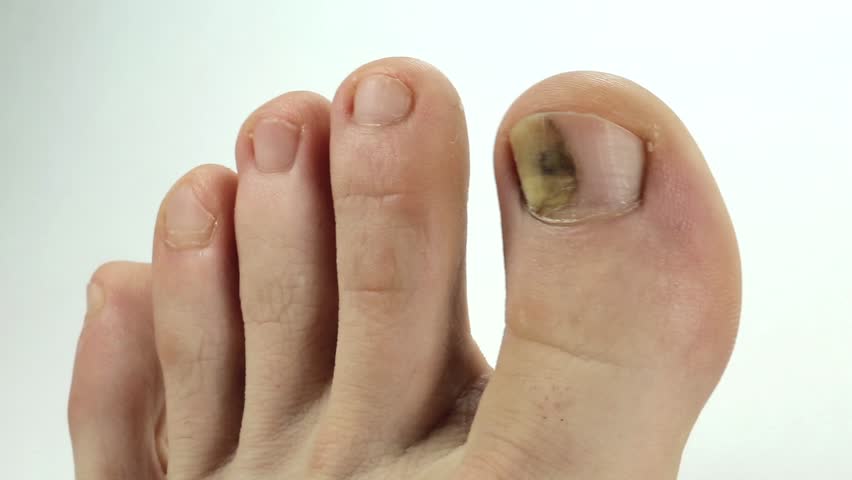
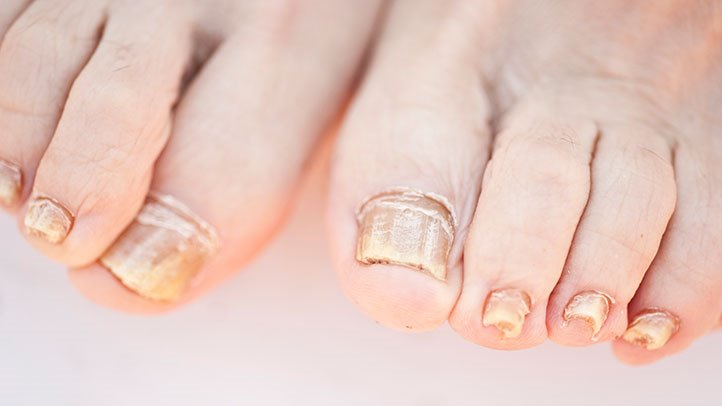
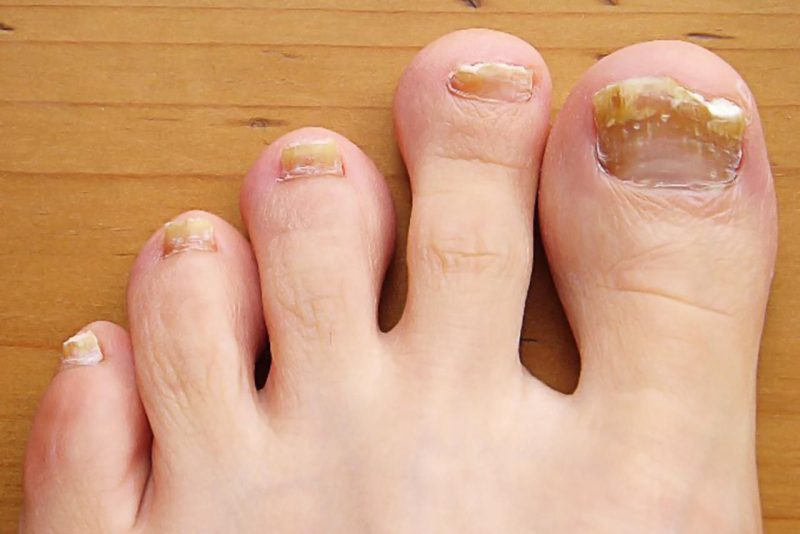
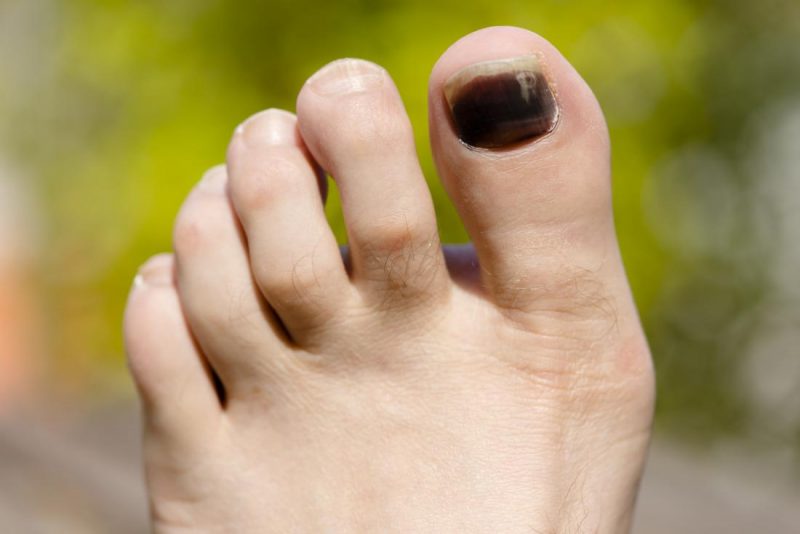
1 thought on “Toe Nail Fungus: Causes, Symptoms and Home Remedies”